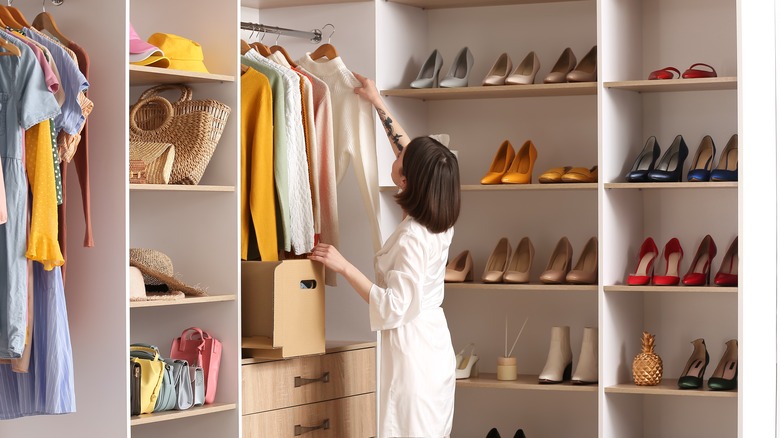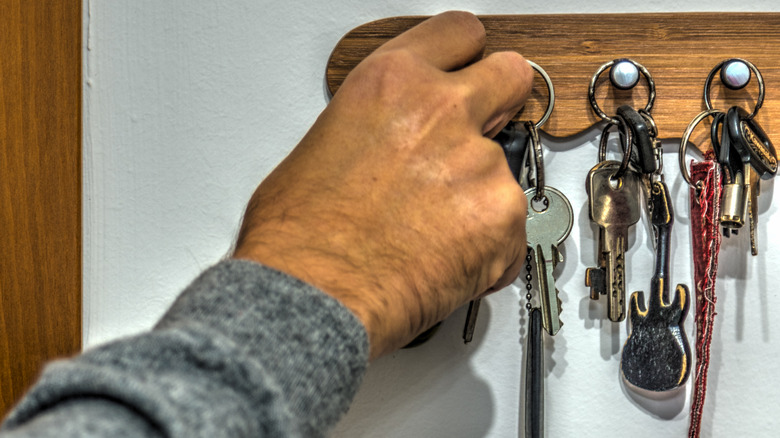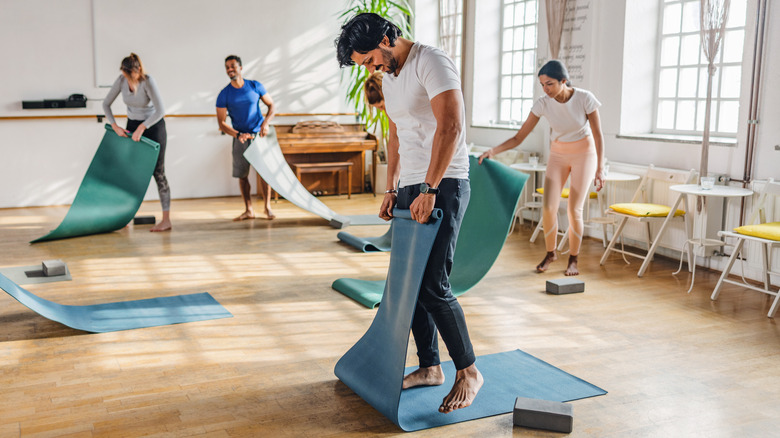The 'One-Touch Rule' Will Change The Way You Clean Your House
The one-touch rule is a bit of organizational wisdom made of equal parts brilliance and absurdity. There's no question that it can revolutionize how you keep your home (and many other things) organized. The rule says you should touch things only once. Nearly all things, that is. This, of course, means you should only touch them once for each occasion of use, not that you should only ever touch a thing one time (which would have quite a dramatic effect on the number of people in therapy and how many forks you need in a proper place-setting).
What the rule is getting at is this: start doing a thing, finish doing it, and put the remnants of that thing away before moving on. It's a genius strategy not just for decluttering but also for managing your to-do list, email, granular business tasks, and lots of other things as well.
We are fond of assigning numbers to our fads, but the one-touch rule is different from the 333 rule, the 80/20 rule, the 12-12-12 rule, and the core 4 method, most of which are either needlessly specific or too vague. (How many completely unrelated 80/20 rules are there? Definitely 20, maybe 80.) There are many good strategies for quick and easy decluttering, like the 12-12-12 rule, but the one-touch rule's name emphasizes its simplicity and its no-nonsense approach.
One touch means putting things away promptly
One of the biggest advantages of the rule is that it encourages adherents to put things away when they're done with them. Examples are easy to come by. Your entryway probably has a drop zone that's like a museum of one-touch rule violations — sort the mail; hang up your keys, purse, and coat; and put away the shopping before you move on to the next item on your agenda. Don't leave dirty clothes by the shower or rakes leaning against the house. If something is broken, try to fix it immediately, or consider throwing it away or calling a handyman. Laundry is one area where it's natural to apply the one-touch rule.
It's critical for everything to have a proper place when you're using this rule, and it's probably wise to take care of those storage systems before trying to implement one-touch; that is, finish touching the storage solutions before touching the rule about using them.
You'll notice we said the rule "encourages adherents." This is just a side effect of having rules: they work best for rule-followers. And it turns out that some people — notably our spouses, our children, and ourselves — aren't always great at following rules. It's not like we are surprised to learn we should hang our jackets in the closet. The value of the rule is realized when, and only when, we decide to follow it. So how do you encourage yourself and others to be rule-followers?
How to improve compliance with the one-touch rule
For some people, the best way to improve their compliance with rules is to never, ever use words like "compliance." This is played out clearly in the battle over getting the elderly to take their medications. There, "compliance" is a term for following the drug-taking rules, while "adherence" describes a more positive, active participation in all aspects of improving one's health ... including taking your meds properly. The jaded and the rebellious will balk at compliance, while adherents will play along.
How you convince someone to become an adherent is a complicated business that might require more than one touch. It works best if you can show them how the rule improves their lives. Teenagers might not care about decluttered entryways, but if you can show them how much video game time is freed up by not having to run all over the house and cleaning with second touches, you might gain an adherent. A productivity-minded adult might learn more from the efficiencies of using the one-touch rule to tidy up your office desk or manage emails and tasks, and then be more amenable to applying the principle at home.
Finally, don't be dogmatic about the one-touch rule; if you try to be hard-nosed about it, skeptics will hide behind silly exceptions ("I'm only supposed to touch the dustpan once?"). Be clear that it applies most of the time. Maybe that's the 80/20 rule of the one-touch rule.



